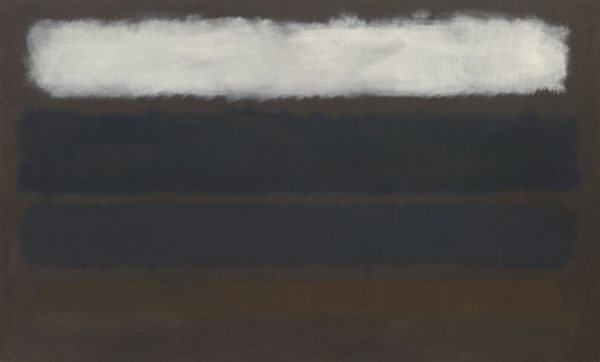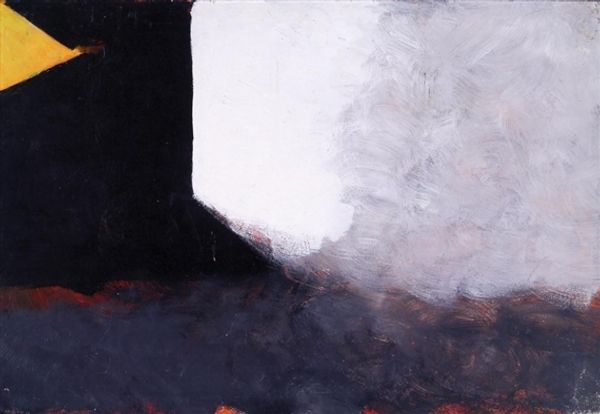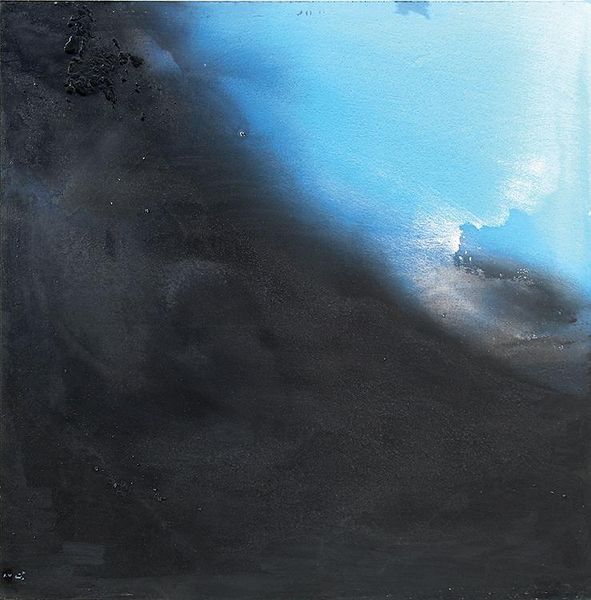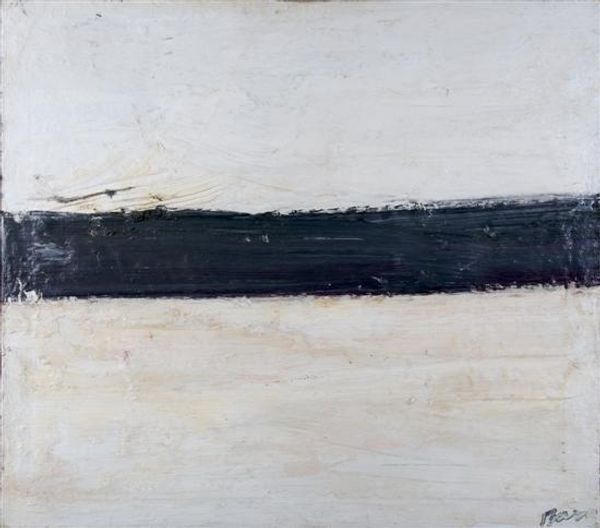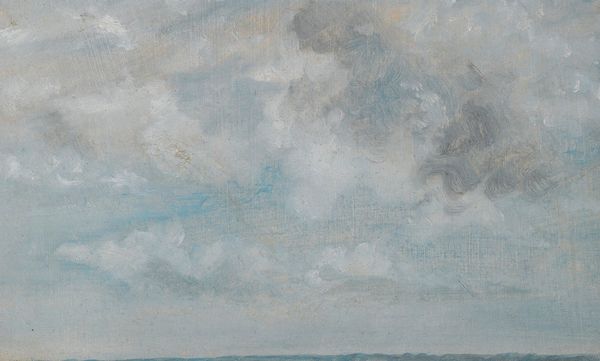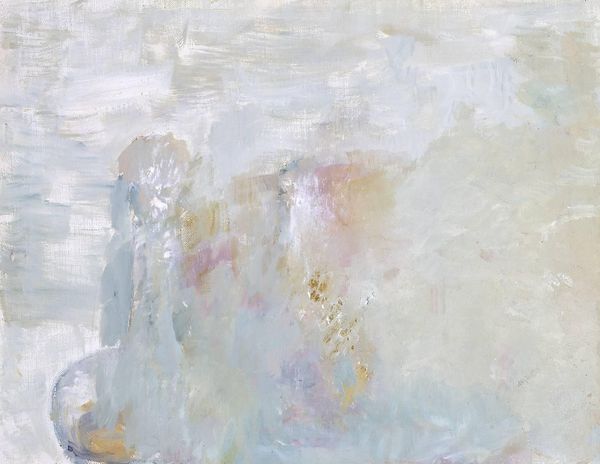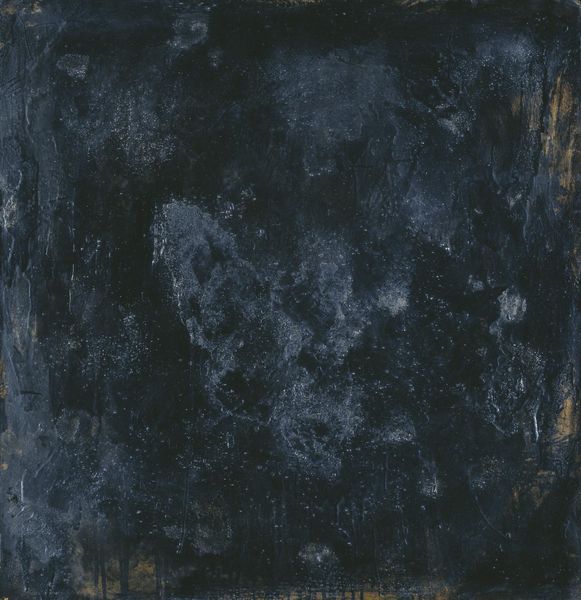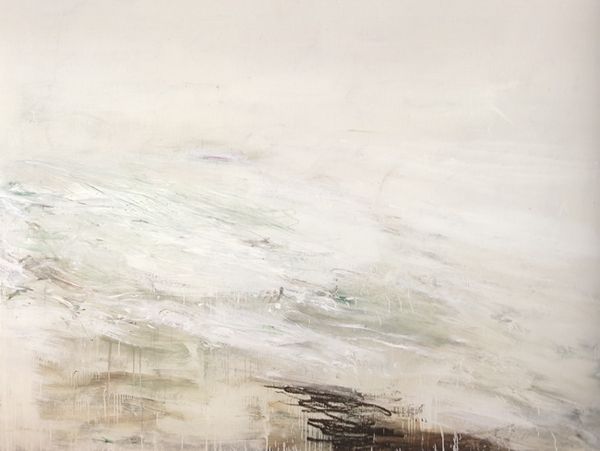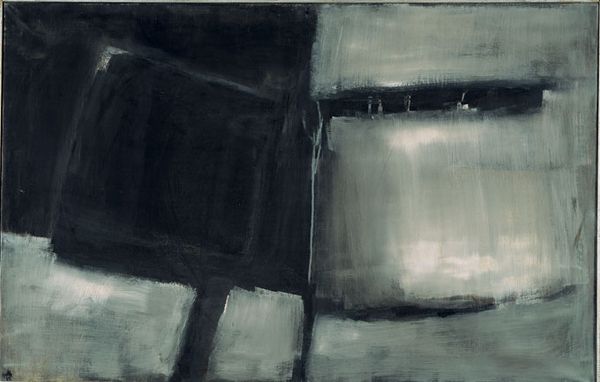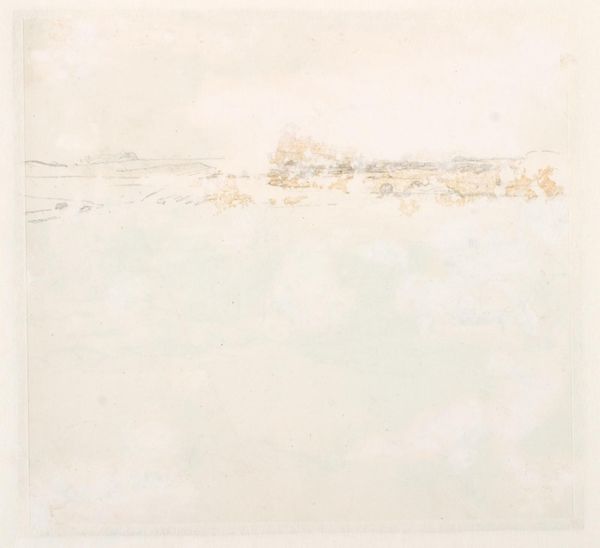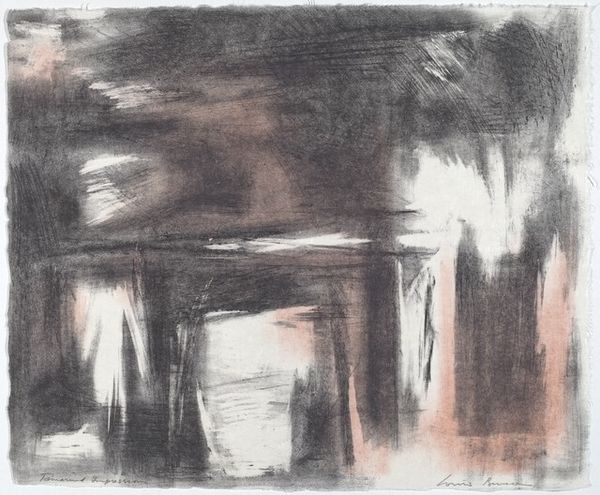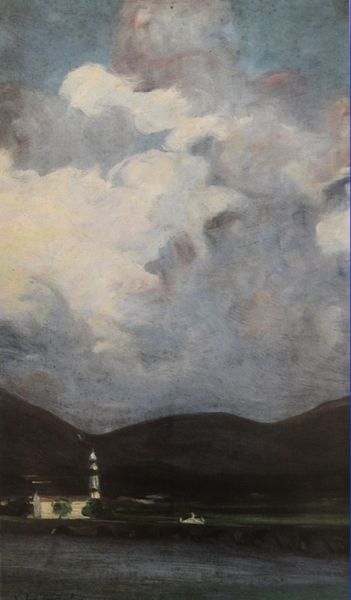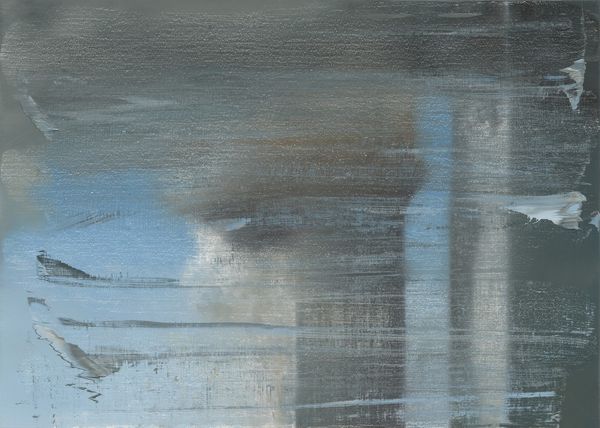
Dimensions: 51 x 61 cm
Copyright: Public domain US
Curator: This is Paul Henry's "The Lough of Tears of the Sorrowing Woman," painted in 1917 using oil paints. Editor: It feels heavy, almost oppressive. That grey...it's the color of sadness, wouldn't you say? The sky dominates everything; the landscape is just a thin dark strip. Curator: Henry’s work often captures the dramatic skies and bleak landscapes of the West of Ireland. It's interesting that he titles this particular scene in such an emotional way. "The Lough of Tears." Editor: Well, given the political climate of 1917, in the midst of World War I and just after the Easter Rising in Ireland, could this lake symbolize something more? A collective mourning, perhaps? Curator: Absolutely. Art never exists in a vacuum. It makes you wonder if he chose that almost monochrome palette intentionally. Restricting the colour seems to focus the emotion. Editor: The almost total lack of colour adds to that sombre tone, right? It feels deliberate. We might consider that landscapes weren’t only about capturing scenery for artists like Henry, they were about conveying powerful sentiments related to history, power and identity. Curator: And perhaps, in this case, personal loss or sorrow. He doesn’t offer us a picturesque view; rather, we get this stark and windswept scene that just *feels* melancholy. I can almost feel the wind. Editor: I keep thinking about that title, the "Sorrowing Woman". Is it the land itself that’s weeping, or does he connect this scene to the experience of women enduring war and its aftereffects? Were women denied a political voice even in mourning? Curator: It’s possible to interpret it on several levels. It makes the viewing experience all the more poignant. It moves beyond simple representation, wouldn’t you agree? Editor: Indeed. It forces a reckoning. It reminds me that landscapes, seemingly passive, can reflect very active histories of suffering. The way this landscape reflects not light but perhaps suppressed cries… Curator: It's haunting. After looking at this painting I am compelled to look at other art from this era in this region. Editor: For me, seeing a piece like this is like opening a dialogue across time.
Comments
No comments
Be the first to comment and join the conversation on the ultimate creative platform.
